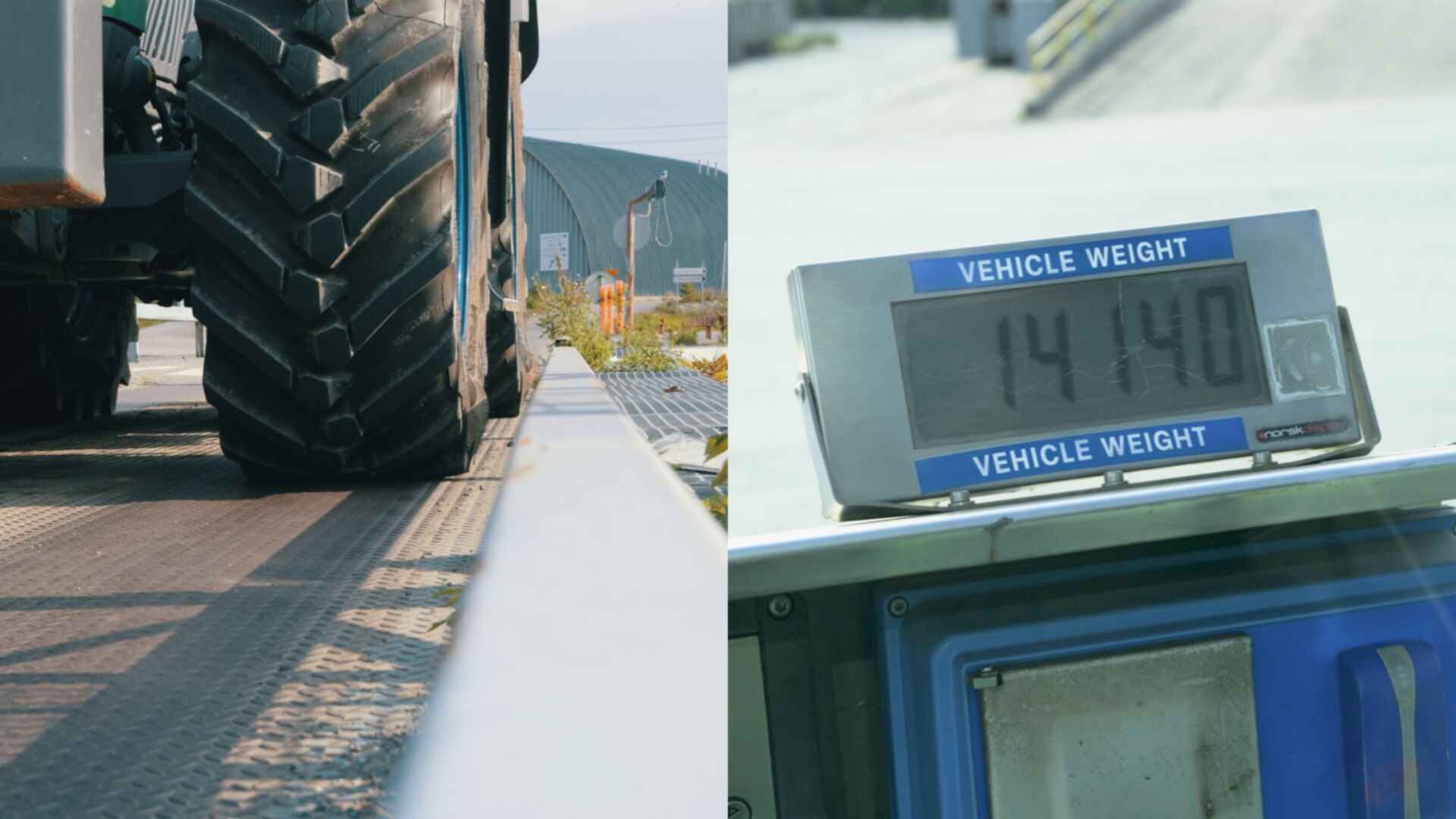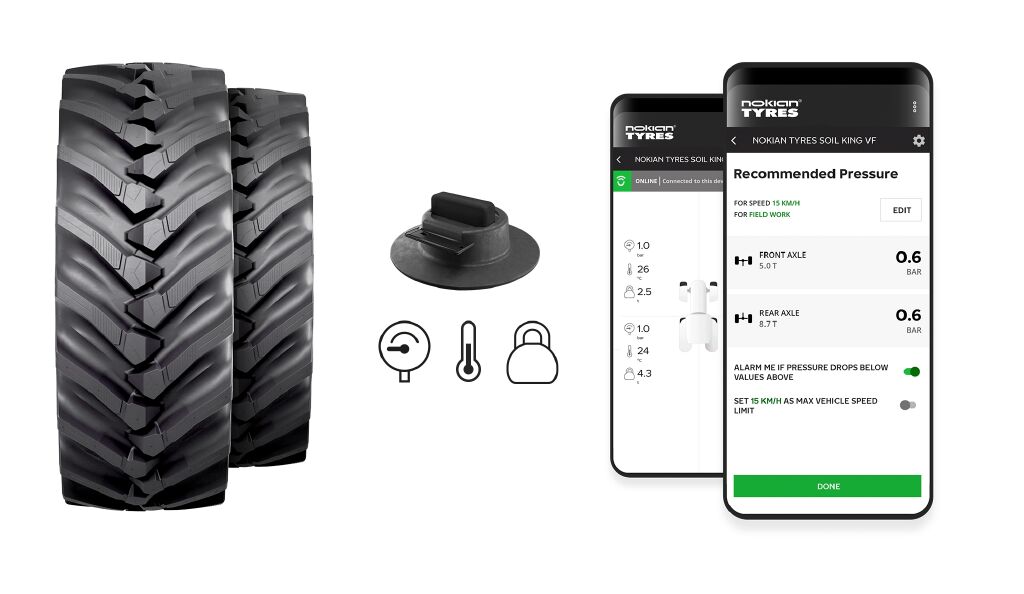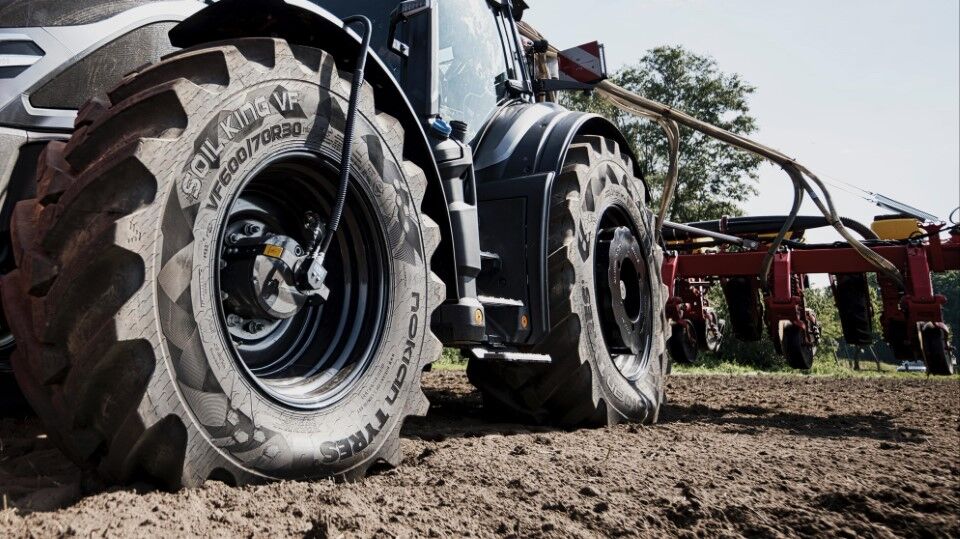Tire information
How low dare you go? – Determining the correct tractor tire pressure requires precision and data

Determining the correct tire pressure is a daily challenge for agricultural professionals. While it may seem straightforward, the reality is far more complex. But what happens if the pressure is just slightly off? In this article, our Product Manager Matthew Crocker explains why the tire pressure matters and reveals the easiest and fastest way to get pressure recommendations on the go.
The right tire pressure depends on the tractor’s actual operating weight and use conditions. Getting it right is a matter of fine margins — even a few decimals can mean the difference between efficiency and excess. Too much or too little pressure affects fuel consumption, tire lifespan and soil health. That’s why relying on guesswork rarely delivers the best results; precision is key to maximizing performance and sustainability.

Traditional approaches: time-consuming and uncertain
Historically, tire pressure has been determined in one of two ways.
The first method involves weighing the tractor or machine. Operators first weigh the front and rear axles — typically at a nearby weigh station if farm scales aren’t available. Then, using the tire manual’s load tables, they set the tire pressure based on weight, speed, and ground type.
Although this method is accurate in theory, it has some drawbacks:
- It is complex and time-consuming. Field conditions often differ from those at the weigh station. Lowering the plow or attaching implements changes the load, making the measured pressures less reliable.
- Ideally, this process should be repeated every time implements or ballasting change — something rarely feasible in practice
The second method uses digital tools preprogrammed with various implement combinations. Operators must input front and rear weights, axle distances and other variables. Although modern calculators speed up the process, the measurement and input still take time and are prone to errors.

Why does precise tractor tire pressure matter?
Getting tire pressure right is not just about following guidelines. It directly affects efficiency, operating costs and sustainability:
- Fuel consumption: Both fieldwork and transport are influenced by rolling resistance. Even small pressure changes can significantly impact fuel costs.
- Soil compaction: A difference of just 0.2 bar can affect soil health and crop yield.
- Tire lifespan: Low pressure at high speeds can damage tires, while too much pressure can accelerate wear and reduce traction.
Tire pressure must also reflect the load on each tire. Heavier loads require more air to support them safely. In practice, operators often use a compromise pressure for both field and road use but finding the right balance is difficult. Guesswork rarely leads to optimal results: too little air can damage tires, while too much can compact the soil and reduce road performance.
Recommendations on the go
The new Nokian Tyres Intuitu™ 2.0 Smart Pressure Assistant with load-sensing technology helps farmers work more efficiently and safely —both on the road and in the field. Sensors installed inside the tire’s inner liner measure the actual load being carried, enabling the system to provide precise tire pressure recommendations based on the tractor’s actual operating weight and use conditions.
This technology simplifies the process, eliminating the need for specialized knowledge or manual calculations involving implements and ballasting. In the Intuitu™ mobile app, the user simply selects the working conditions, and within moments, recommended pressures are displayed —anytime, anywhere.

Intuitu™ 2.0 is designed exclusively for Nokian Tyres Soil King VF tires, allowing farmers and contractors to fully unlock the benefits of these premium tires. Soil King VF tires are made for low-pressure operation, but without the necessary information, users often hesitate to use the lowest possible pressure. As a result, they miss out on improved power transfer, reduced fuel consumption, minimized soil compaction, and extended tire life. Intuitu™ 2.0 helps users to make informed decisions in every situation, improving efficiency, boosting productivity and protecting soil health for better crop yields over time.
While it is widely accepted that tire pressure should be adjusted to match each task, traditional methods have made this impractical. Weighing, calculating, and rechecking pressures multiple times a day simply isn’t realistic when time and productivity are at stake.

With the precise data offered by Intuitu™ 2.0, users can confidently operate with the lowest possible pressures without the risk of tire damage. The era of compromise is over.
Writer
Matthew Crocker
Product Manager
Please remember that it is the driver’s responsibility to ensure their tires are safe and suitable for their vehicle and to follow the vehicle’s manufacturer´s guidelines for proper use and maintenance. Consult your closest Nokian Tyres dealer or your vehicle’s manufacturer for specific advice.


